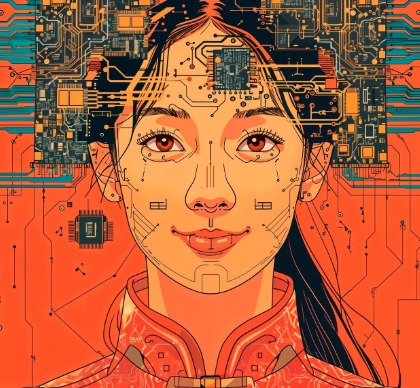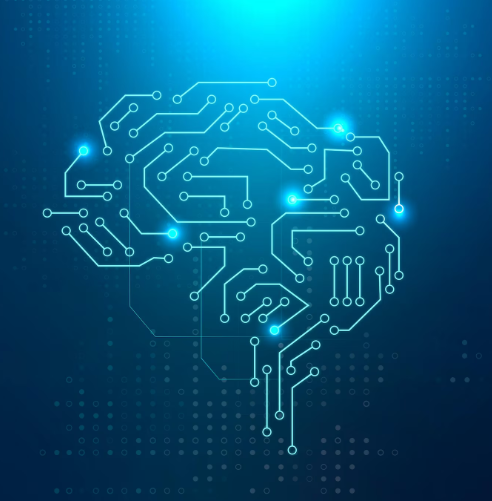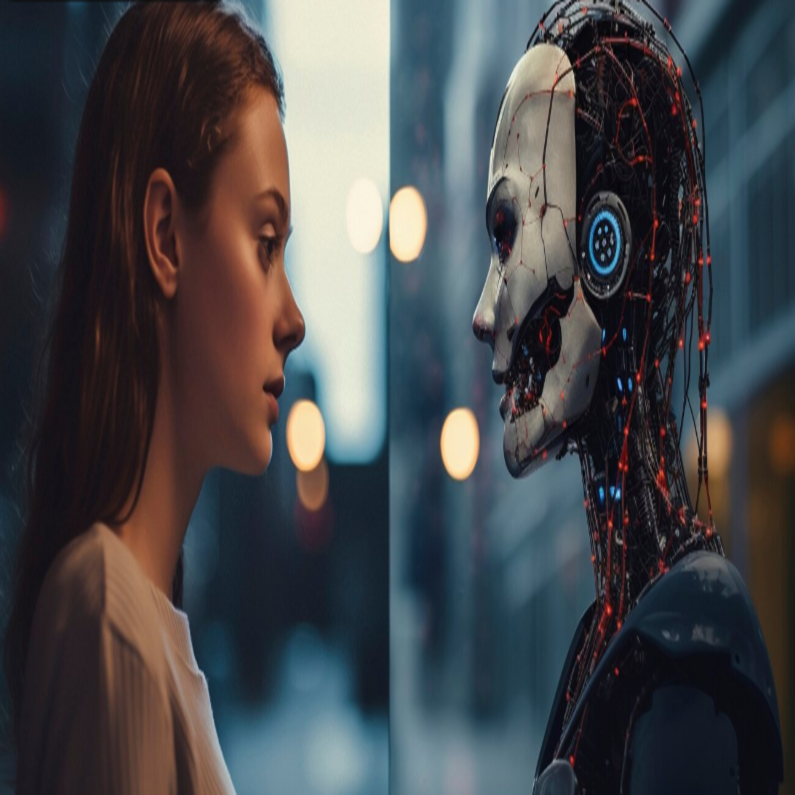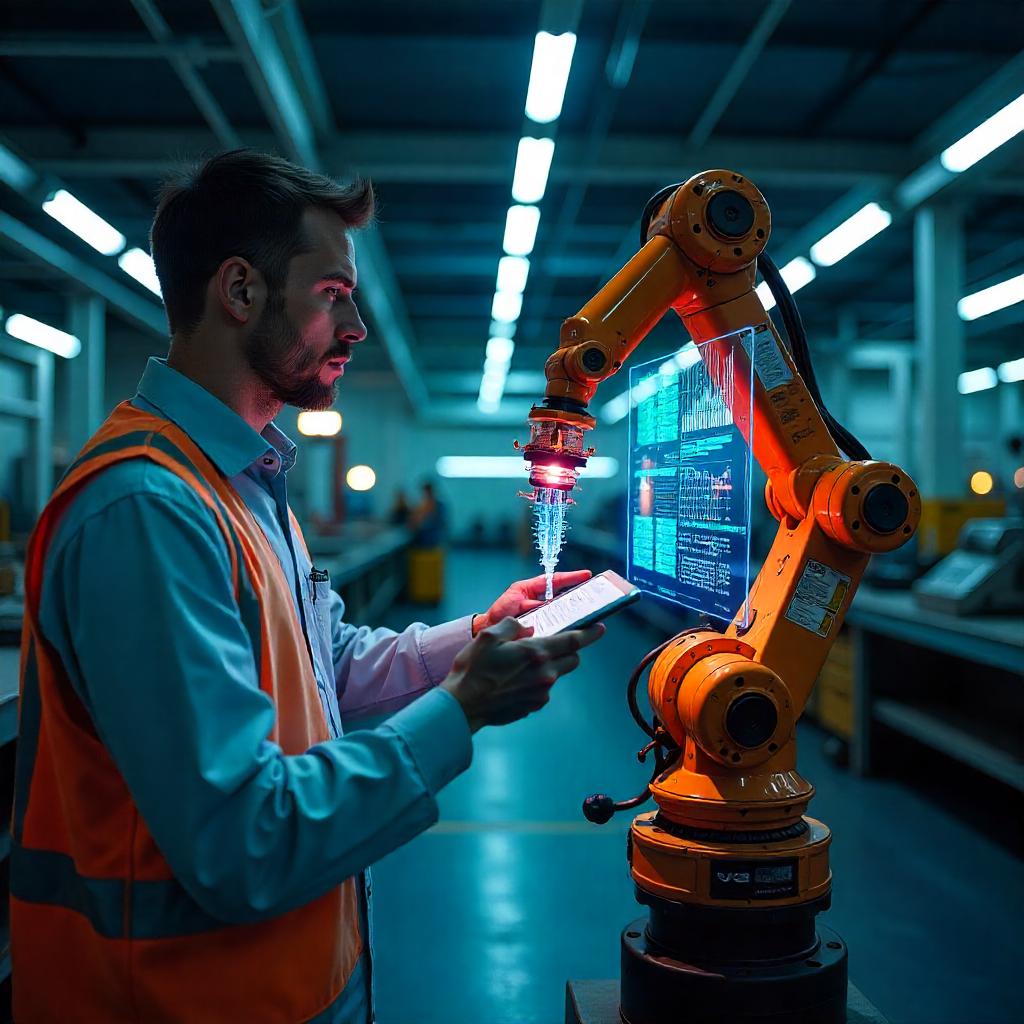Artificial Intelligence (AI) is rapidly becoming a cornerstone in the global effort to combat climate change. By leveraging machine learning, big data analytics, and automation, AI enhances efficiency across multiple sectors, reducing carbon footprints and promoting sustainability. Below, we explore how AI improves energy efficiency, optimizes waste management, and revolutionizes transportation while examining whether AI’s own development aligns with eco-friendly principles.
Coding with AI: How intelligent Tools Support Programmers.
Artificial Intelligence Supporting Developers and IT Professionals: Automatic Code Generation, Testing, Error Analysis, and Threat Detection
Introduction
In recent years, the rapid advancement of artificial intelligence (AI) has profoundly transformed many industries, with software development and IT among the most impacted. AI technologies now assist developers and IT professionals by automating a wide range of tasks that previously demanded significant manual effort. From writing code to testing software, analyzing errors, and identifying security threats, AI has become an indispensable tool in modern software engineering. These innovations have led to increased efficiency, higher quality software, and improved security, enabling professionals to focus on more complex and creative aspects of their work.
This comprehensive article explores how AI supports programmers and IT specialists throughout the software development lifecycle. We will delve into the practical applications, specific tools, advantages, and challenges related to AI-driven code generation, software testing, error analysis, and cybersecurity threat detection.
Automatic Code Generation
One of the most prominent and widely recognized applications of AI in software development is automatic code generation. Powered by advances in large language models (LLMs) like GPT-4, AI systems can now translate natural language descriptions or problem statements into functional code snippets in various programming languages. This capability allows developers to describe a desired feature or behavior in plain English, and the AI generates the corresponding source code.
This development dramatically accelerates the coding process, particularly for repetitive or boilerplate code, enabling programmers to allocate more time and mental energy to architectural decisions and complex logic. The AI acts as an intelligent assistant, offering suggestions and producing code based on context and past examples.
GitHub Copilot is one of the best-known examples of such tools. Created through a partnership between GitHub and OpenAI, Copilot integrates into popular development environments and provides real-time code suggestions as developers write. It can suggest single lines or entire functions, effectively becoming a pair programmer who never tires. This tool has gained widespread adoption due to its ability to increase productivity and help users overcome coding blocks.
Tabnine is another AI-powered code completion assistant that learns the coding patterns and styles from a specific project’s codebase. Supporting multiple languages and integrated with numerous IDEs, Tabnine tailors its suggestions to the context of the developer’s work, making the experience highly personalized.
Amazon’s CodeWhisperer focuses on assisting developers working within the AWS ecosystem. It helps generate code snippets for common cloud tasks, such as setting up infrastructure or interacting with AWS services, reducing the friction involved in cloud-native development.
DeepMind’s AlphaCode targets more challenging use cases, such as competitive programming and complex problem solving. By interpreting problem statements and generating code solutions, AlphaCode demonstrates AI’s growing capacity to tackle sophisticated programming challenges.
The benefits of AI-driven code generation are manifold. Developers experience a significant productivity boost as AI handles routine coding tasks, freeing them to concentrate on higher-level design and innovation. Rapid prototyping becomes easier, enabling teams to validate ideas and requirements faster. Additionally, AI tools provide valuable learning support for junior developers, who can see concrete examples and recommended practices in real time, accelerating their skill acquisition.
AI-Powered Software Testing
Testing is an essential part of the software development process, ensuring that applications work correctly and reliably. Traditional testing methods often involve manual creation and maintenance of test cases, which can be time-consuming and labor-intensive. AI is revolutionizing this area by automating many testing activities, making them faster and more effective.
Artificial intelligence can generate different types of tests automatically, including unit tests, integration tests, and end-to-end tests. By analyzing source code or user requirements, AI systems create and maintain test scripts that can be executed continuously, reducing the workload for quality assurance (QA) teams and improving test coverage.
Testim.io is a notable AI-driven testing platform that specializes in automating UI tests. Using machine learning, it observes how applications behave, adapts tests in response to UI changes, and maintains test accuracy over time, minimizing false positives and maintenance overhead.
Mabl offers a low-code AI testing solution that detects visual regressions, performance issues, and broken user flows. Its ability to combine AI with intuitive user input makes it accessible for teams with varying technical expertise, enabling faster identification of issues that affect user experience.
Functionize uses AI to translate natural language test cases into automated scripts executed in the cloud. This approach simplifies test creation and allows non-technical stakeholders to participate in defining testing scenarios, bridging communication gaps between business and engineering teams.
Beyond generating test cases, AI excels at analyzing system logs and monitoring runtime behavior. It can sift through vast amounts of log data, detect anomalies, performance bottlenecks, and hidden bugs that human operators might miss. Early detection of such issues helps prevent downtime and ensures smoother software operation.
AI for Error Analysis and Code Optimization
AI’s role extends beyond code generation and testing into error detection and code quality improvement. Intelligent debugging systems assist developers by identifying potential runtime errors, syntax mistakes, and logical flaws as they write code. These systems go beyond basic syntax checking, employing semantic analysis to understand code behavior and context.
Tools like GitHub’s CodeQL perform semantic code analysis to identify vulnerabilities and inefficiencies. CodeQL queries codebases to find patterns indicating security flaws or performance issues, widely used in both open-source and enterprise projects to maintain code integrity.
DeepCode, acquired by Snyk, provides real-time feedback by analyzing millions of repositories to offer suggestions that improve code quality and security. Its vast knowledge base allows it to detect common mistakes and recommend best practices effectively.
Snyk itself is focused on securing open-source libraries, container images, and infrastructure-as-code files. By integrating with CI/CD pipelines, Snyk helps developers identify and fix vulnerabilities early in the development process.
AI also aids in code refactoring and optimization by recommending structural improvements. It can suggest simpler algorithms, more efficient data structures, or performance-enhancing techniques such as lazy loading or caching. These recommendations help reduce technical debt, improve maintainability, and enhance application responsiveness.
Threat Detection and Cybersecurity
In the era of increasing cyber threats, AI has become a vital tool in software security. AI systems help identify vulnerabilities in source code through both static and dynamic analysis. They detect patterns associated with common exploits, such as SQL injection, cross-site scripting (XSS), and insecure deserialization, learning from extensive datasets of known vulnerabilities.
Tools like Codexity integrate with static analysis frameworks (e.g., Infer, CppCheck) to detect security risks, particularly focusing on code generated by AI models, which may inadvertently introduce new vulnerabilities.
DeVAIC is specialized in analyzing AI-generated Python code, highlighting potential security issues and missing safeguards. Such specialized tools are essential as AI increasingly contributes to code creation.
Microsoft Security Copilot combines large language models with threat intelligence to assist security teams in incident investigation, threat response, and enhancing overall security posture. It enables faster and more accurate detection of suspicious activity and supports informed decision-making.
Some AI-powered systems provide real-time threat detection by monitoring applications for abnormal behaviors, such as unusual API calls, unauthorized data access, or atypical login patterns. These systems can automatically trigger alerts or block malicious actions, reinforcing application security dynamically.
Challenges and Limitations
Despite the numerous advantages, AI-assisted software development faces challenges and limitations. One key issue is the imperfect accuracy of AI-generated code. Studies have shown varying correctness rates among AI tools, with models like ChatGPT achieving approximately 65% correctness, GitHub Copilot about 46%, and Amazon CodeWhisperer around 31%. This means human review and testing remain indispensable.
Security risks are also a concern, as AI-generated code may contain hidden vulnerabilities or non-compliant practices. Without thorough validation, such issues could lead to significant security breaches.
Another challenge is the potential over-reliance on AI by less experienced developers, which might hamper their understanding of foundational programming concepts. It is critical to use AI as an assistant rather than a substitute for core knowledge and critical thinking.
Moreover, AI models inherit biases from their training data. If the training datasets include insecure, outdated, or biased coding patterns, AI tools might replicate those mistakes, underscoring the need for careful curation and continuous model updates.
The Future of AI in Software Development
Looking forward, AI will not replace developers but rather augment their capabilities. The future of programming lies in collaborative workflows where humans focus on creativity, design, and problem-solving, while AI manages repetitive and error-prone tasks.
Emerging tools will likely incorporate explainability features, helping developers understand the reasoning behind AI-generated code suggestions and verifying their correctness.
Domain-specific AI models may become more prevalent, tailored to industries like healthcare, finance, or robotics, where regulatory and technical requirements are stringent and specialized.
End-to-end automation integrating AI throughout the software lifecycle—from requirements gathering to deployment and monitoring—will become increasingly common, embedded in DevOps and continuous integration/continuous deployment (CI/CD) pipelines.
Conclusion
Artificial intelligence is reshaping how software is developed, tested, maintained, and secured. From automatic code generation and testing automation to sophisticated error analysis and threat detection, AI serves as a powerful ally to developers and IT professionals.
By accelerating development cycles, improving code quality, reducing time to market, and strengthening security, AI enables teams to deliver better software faster. Nonetheless, responsible use of AI requires ongoing human oversight, thorough validation, and ethical considerations to ensure that software remains reliable, safe, and aligned with organizational goals.
As AI continues to evolve, it will unlock new possibilities in programming, empowering professionals to reach higher levels of innovation and excellence.
AI: Opportunities and Risks – What Everyone Should Know
Artificial Intelligence (AI) is one of the most powerful forces shaping the 21st century. From changing how we work and learn, to redefining entire industries and touching nearly every part of daily life, AI’s impact is broad and far-reaching. The pace of its development is accelerating, making it essential for everyone—students, professionals, and citizens—to understand what AI is, how it works, and what its future could look like. This article explores foundational AI concepts, its numerous opportunities, and the risks it poses across different areas of society.
AI in Graphic Design and Digital Printing: Between Creativity and Automation
AI in Graphic Design and Digital Printing: Between Creativity and Automation
Artificial intelligence is transforming graphic design and digital printing by introducing powerful new tools and workflows. But how does AI affect creativity? Does it empower designers or limit originality? Explore the balance between technology and human imagination in this evolving field.
AI and the future of Mechatronics: Smarter Machines Smarter Work
AI-driven manufacturing improves efficiency and quality through automation and data analysis, but raises ethical concerns such as job displacement and transparency. Responsible implementation involves reskilling workers, promoting human oversight, and adhering to ethical standards to ensure technology benefits society while maintaining trust.





